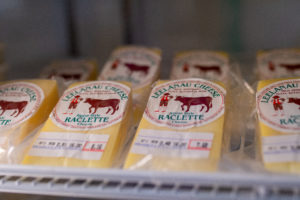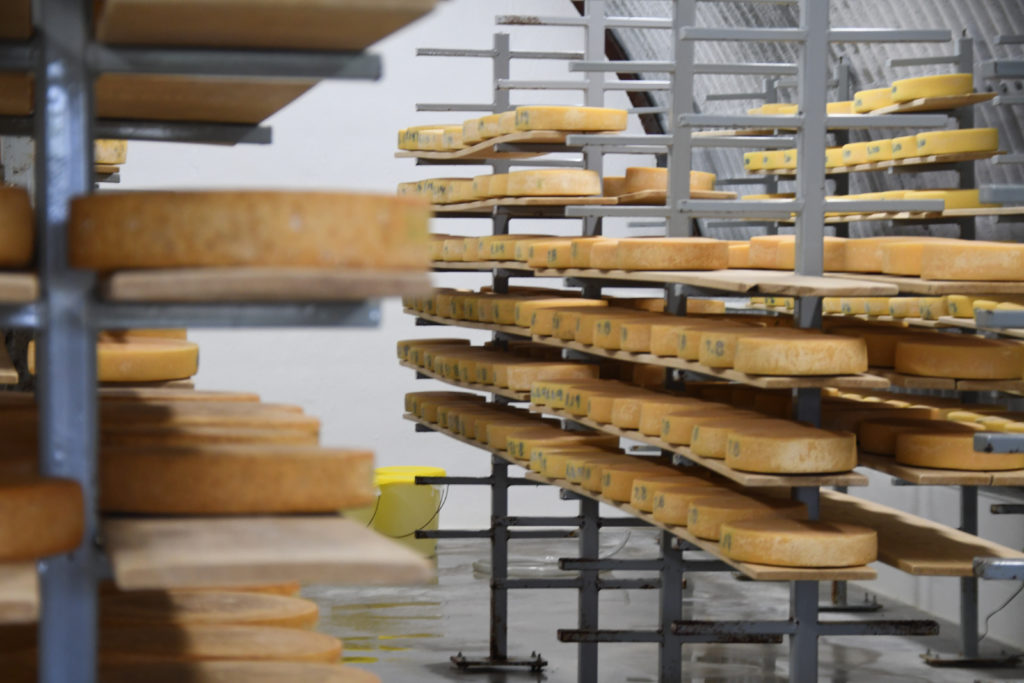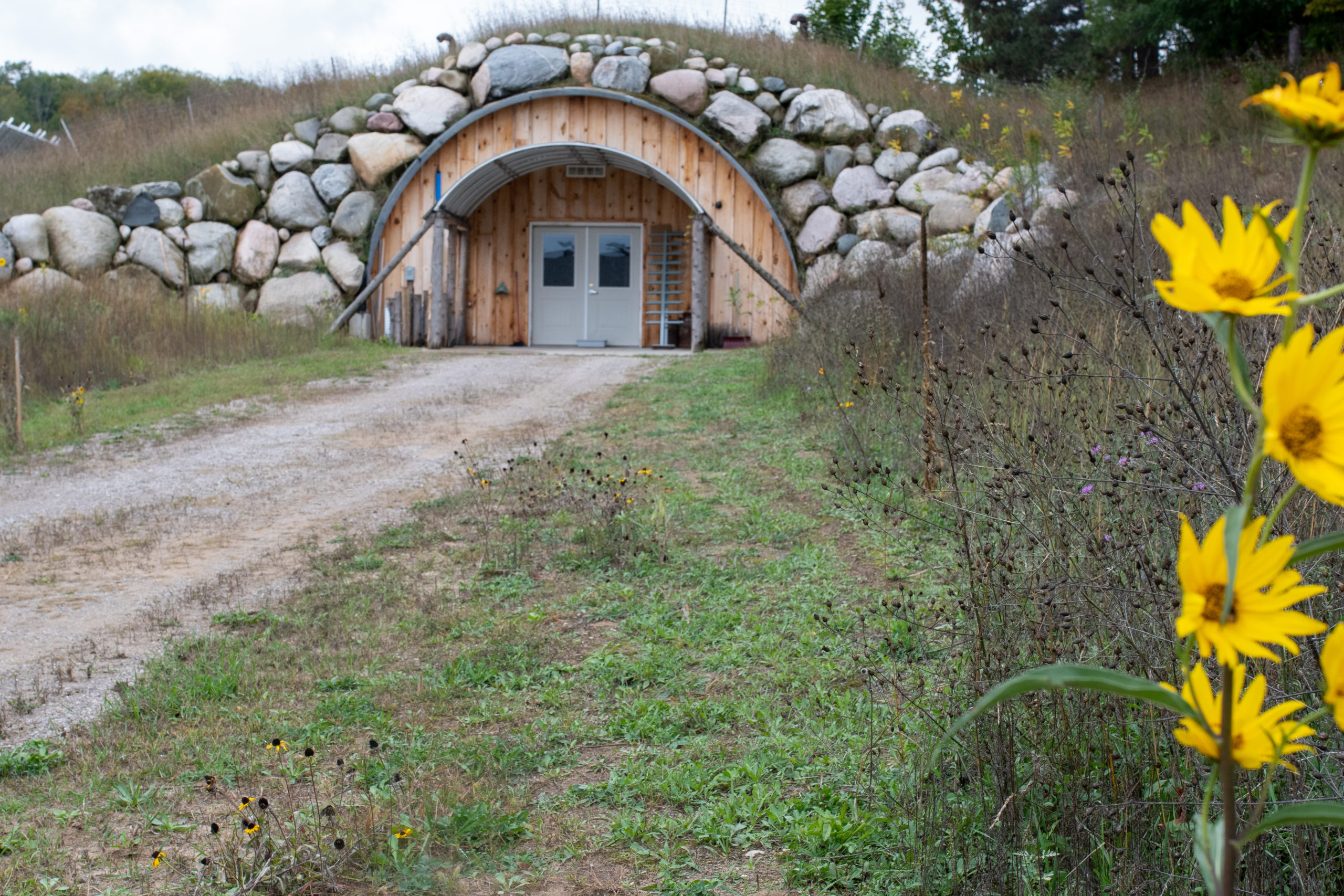Step by step—or hoof by hoof—every year thousands of cows march up craggy slopes, past sheer drops and into the mountains. Spending their summers on Alpine pastures, the cows graze on the mountain side while their caretakers make fresh cheese after each milking. Dating back to the 14th century, it’s a uniquely Swiss tradition.
In a small slice in the history of the “Alping of Swiss cows,” a Detroit-born cheesemaker and a shepherd from northern France met in those mountains. It was the 1980s, they were both transplants to the small village of Eison, Switzerland, and together, John and Anne Hoyt cared for the cows and made raclette cheese.
“When we were cheesemakers in Switzerland, we made the most beautiful cheese,” Anne recalled.
After three years in Switzerland, John brought Anne home to Michigan. They spent the first few years in Detroit, but the husband and wife team longed to return to making cheese.
“We had no money, just an idea,” Anne said. “We started to look at how we could get this going.”
This time, Northern Michigan’s mountains of sand, brilliant blue waters and rolling landscape captivated John and Anne. They set up a small artisanal cheese company, Leelanau Cheese Company, in the Leelanau Peninsula. They occupied a few different locations until moving to their current creamery, less than a mile from Lake Michigan, in 2014. From the beginning, they wanted to make cheese and keep a close connection to the farm but didn’t want to milk the cows themselves.
That’s where MMPA came in. When they stirred the curd in their first batch of cheese in 1995, they worked with a farm just a few miles away in the Leelanau Peninsula. Now, thanks to their relationship with MMPA, Booms Dairy Farm supplies Leelanau Cheese one day a week.

John picks up the milk in a small bulk tank truck called “The Milky Way.” As soon as they receive the milk, cheesemaking begins. Just like in Switzerland, they make varieties of raclette and fromage blanc cheese. Starting with 400 gallons of milk, most of the process takes place in one vat, from pasteurizing to cutting the curd. Then they press the cheese into round molds where it rests overnight. Then the wheels are moved to the cellar where they age on custom milled ash wood boards for 3 to 4 months or 10 months for the sharp variety.
Though they aren’t milking the cows themselves on this side of the Atlantic, it’s still at 365-days-a-year job. Every day they visit the cellar and wash brine each wheel of cheese.
“It’s very labor intensive. For farmers, even on Christmas you milk cows. For us on Christmas, we still have to take care of the cheese,” Anne said.
As owners of a small business, John and Anne are involved in every aspect, from staffing to milk hauling to cheesemaking to marketing. Their creamery—converted from an abandoned church—features a retail store with big windows so customers can watch the cheesemaking process. Out back, fields of wildflowers house a few rows of solar panels and their cellar.

Their signature cheese, the raclette, is nutty and buttery. “’Racler’ in French means ‘to scrape,’” Anne said. The cheese is meant to be melted, traditionally by the fire, and scraped over food like potatoes or meat.
“It is believed that Raclette began on the hillsides of Valais region in Switzerland as a wine harvest was coming to an end. Grape gatherers took from their sacks a small loaf of brown bread, some cheese and a bottle of wine,” the Leelanau Cheese website states. “Legend has it that one of the men stabbed a piece of cheese with a large buck knife and approached a crackling fire, it started to melt and run with a crisp, golden texture.”
Today in Michigan’s own wine country, the Hoyts take pride in the heritage of their cheese. It’s racked up several cheese awards including winning Super Gold in the World Cheese Awards in 2017.
With almost 25 years cheesemaking in the Leelanau Peninsula, for now they’re taking it “one year at a time.” The small Michigan creamery—and its Swiss roots—has earned fans locally and globally. “The setting has changed, but the recipes are the same.”
This article was originally published in the November/December 2019 issue of the Milk Messenger. Subscribe »

